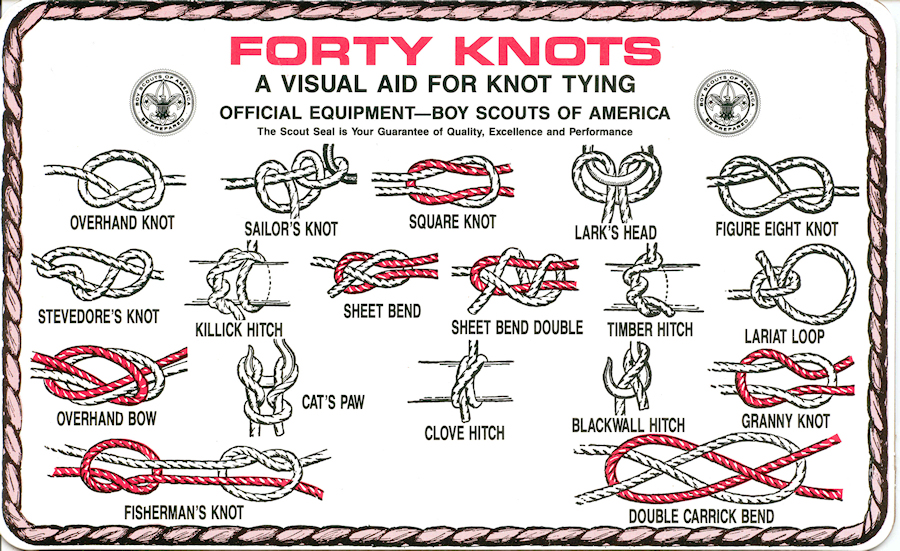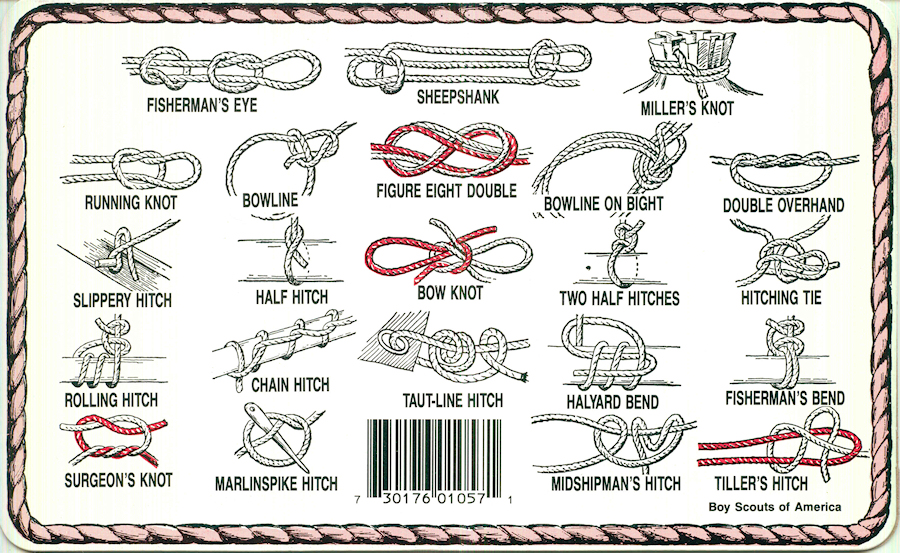A slavish sense of inadequacy is the number one failure with the way most people approach learning. Let’s get one thing out of the way, you can’t know everything. You can’t even begin to know everything within your industry. You can’t even begin to know everything within your expertise. You could spend all your life reading written knowledge alone, and not even complete that task. Let alone put the information to actual use.
Feeling insecure for not knowing enough is not a productive mindset. Unfortunately, in a society where many are paid for what they know, it’s not so easy to dismiss this mindset.
When you put your shoes on, how do you tie them? Have ever considered tying them a different way? Do you just leave them tied and slip them on and off? When was the last time you thought about this?
Did you know there are lots of ways to tie a knot? Boy Scouts are taught forty different knots at a minimum. Certainly these aren’t all intended for shoes, but I bet many of them would work.
Chances are you don’t fret too much about this because the way you tie your shoes is sufficient to keep your shoes on your feet. Perhaps if they fell off all the time you would reconsider.
Most of the sense of inadequacy with learning comes from fretting over different ways to do something you don’t need an alternative to. In these situations, the outcome is the same or not substantially different. If the purpose of tying your shoes is to keep your shoes on, learning new ways to tie them is a waste of time.
Instead of focusing on learning, focus on what you would like to accomplish. Then, you’ll see a variety of ways to proceed. All you need is to pick one of them and get going.
Learning is a means, not an end. If learning is your end, you’re never going to overcome your inadequacy. You’ll always have something new you could learn. And no matter how much you learn, you’ll never seem to get anywhere. Infinity is rather large. You’re also going to struggle picking a direction. Because every direction is going to have something new to learn.
One great way to focus on what you would like to accomplish is to ask yourself what’s holding you back. What could you do better. What’s something that’s really problematic. Pick something substantial to improve. With a substantial outcome in mind, look at your opportunities to learn. They’ll be much reduced. Perhaps one sticks out. Which learning investment is most likely to get you the improvement? If there’s still too many choices just pick one at random and get on with it. If it doesn’t work out, you can always pick another.
Prioritize your learning based on what you’d like to accomplish. And don’t be greedy. There’s always another improvement you can make. If you tackle the biggest opportunities you’ll find yourself way ahead of the pack. Balance investments in improvement through learning with everything else you’d like to do in this life.
If your shoes stay on, stop learning new ways to tie them. Get to running.
Try this:
Write down a list of the things you’ve learned recently, try to list five things:
For each thing you learned, write down how you measurably improved:
Now, how could you have spent less time learning to achieve the same outcome:
What can you do to be more effective the next time you use learning to improve:

